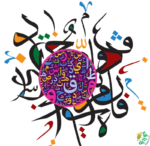|
Arabic has left deep historic, scientific, and cultural imprints on European languages, such as French, English, Italian, Portuguese, and Spanish. |
| You could learn Arabic online and start scoping those imprints for yourself! |
| The Alhambra in Granada (الْحَمْرَاء, Al-Ḥamrā) in Spain: just one example of how Spanish has borrowed from Arabic! |
| For example, English has many words of Arabic origin due largely to the propagation of the Islamic civilization. |
| Taking courses in Arabic means learning about Arabic culture and studying classical Arabic through Arabic literature. |
| Literary Arabic has been standardized to be universally understood as opposed to dialectical Arabic which includes variants of Arabic. Each Arabic-speaking country has its own dialect. Moroccans, for example, speak Darija! |
| Reading, writing, and understanding Arabic is said to be quite complex. |
| Here is why that may be so: |
- The Arabic alphabet contains twenty-eight letters, each having four different forms.
|
- Arabic words are based on roots composed of guttural consonants.
|
- Arabic verbs are conjugated int 17 tenses.
|
- Arabic has a very rich vocabulary. There are 80 words for honey, 200 for snake, 500 for lin, 1000 for camel and sword, and up to 4000 for expressing sadness.
|
| Check this out! According to an Arabic grammarian, it takes six camels to transport the entire compendium of Arabic language roots! |
| To give you an idea of just how dense the Arabic language is, consider the fact that there are 60,000 Arabic vocabulary words and 6,000 Arabic language roots. on the other hand, the average adult native English speaker knows abut 35,000 vocabulary words. |
| About 900 English words have Arabic origins, and many Arabic words are part of the average English vocabulary. |
| Fr example: |
|
|
|
|
|
| sugar, sucrose, sucrase سكّر sukkar, sugar |
| Gazelle غزال ghazāl, gazelle |
| So, learning about the Arabic language means learning more about the English language! |
| And, Arabic influence does not stop at the English language. |
| Under Muslim rule for several centuries, Andalusian Spanish includes 4000 Arabic-sounding terms. |
| Don’t Confuse Arabs with Muslims |
| Let’s debunk an unfortunately common stereotype. |
| Arabs are too often automatically associated with Islam. |
- The word “Arab” refers to the ethnicity of the people who originate from the Arabian peninsula.
|
- Muslims are people who practice the religion called Islam.
|
| As you can see, Islamic culture exists well beyond the borders of Arabic countries! |
| Likewise, there are non-Muslim Arabs (Lebanese Christians), non-practicing Arabs, non-Arab Muslims (Persians (Iranians), Pakistanis, Afghans, Turks, Indonesians, some Chinese, Albanians, and Bosnians, among others)! |
| In fact, Arabs make up only 20% of the total Muslim population. |
| Interesting, right? |
| As of 2011, while there were 378.2 inhabitants of the Arab world, there were 1.6 billion Muslims worldwide. |
| 10% of the Egyptian and Syrian populations are Arabic. 15% of these groups are Christian. Many Arab-speaking Jews live in Morocco and Tunisia. |
| The countries with the largest Muslim populations are listed below. |
- Indonesia, with 205 million Muslims (12.7% of Muslims worldwide)
|
- India and Pakistan, with 177 and 178 million Muslims respectively (11% of Muslims worldwide)
|
- Bangladesh, with 148.6 million Muslims
|
- Turkey, Nigeria, and Iran, with 75 million non-Arabic Muslims
|
| 93% of the population in Turkmenistan claim Islam as their religion. However, they do not speak Arabic and are not part of the Arabic world! |
| In the end, while Arabic is the official language of the Quran and ne of the pillars of Islamic civilization, Islam has been moving beyond Arabic populations ever since the fall of the Baghdad Caliphate on February 10, 1258. |
| That’s 750+ years ag! |
| S with so much that we don’t know abut Arabic, learning the language of Islam with not only make you bilingual, it will pen your eyes to everything you have ever wanted to know abut Arabic. |
| |
|
|



